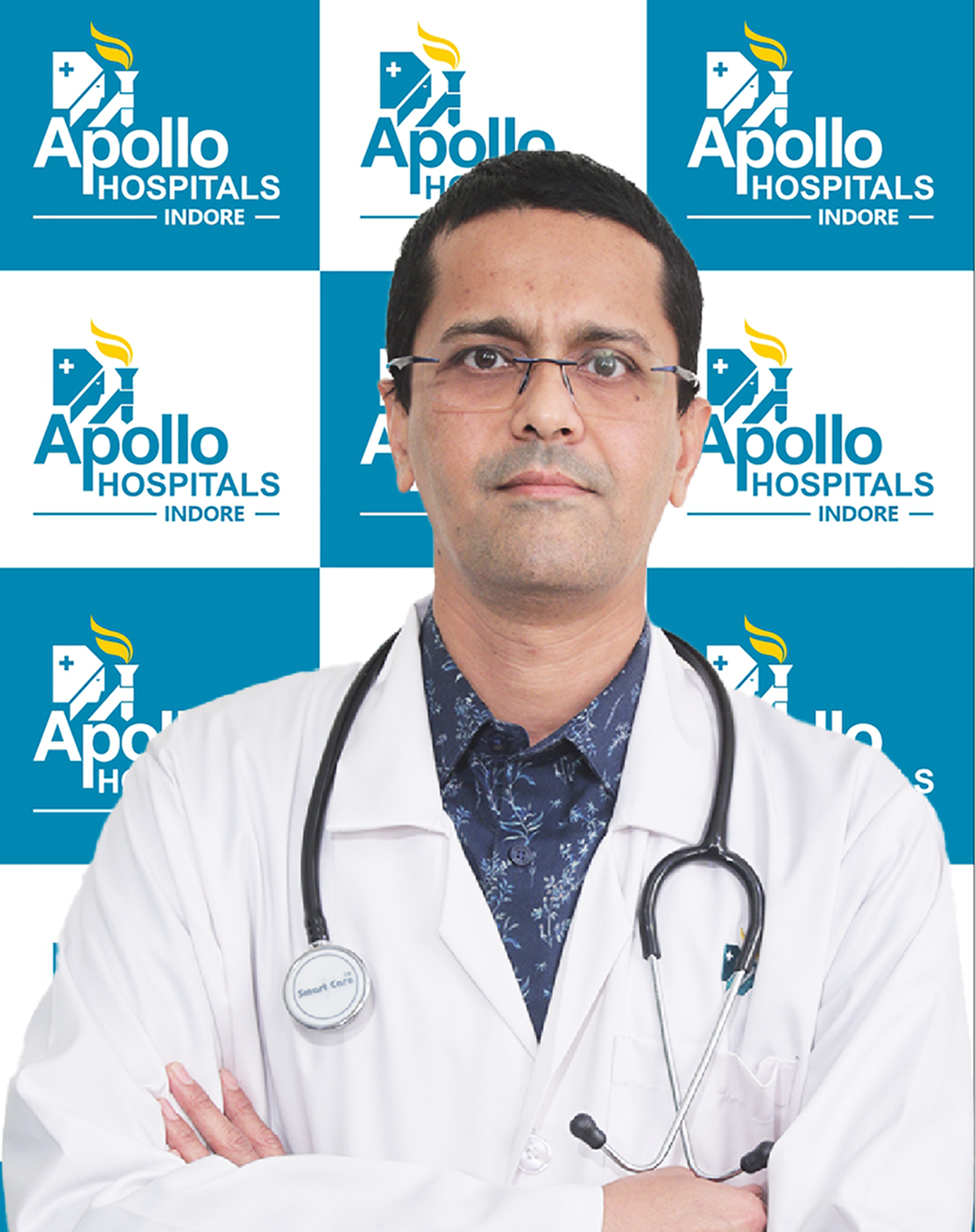Could not find what you are looking for?
- Treatments & Procedures
- Active Surveillance For Prostate Cancer - Types, Procedure, Cost In India, Risks, Recovery and Benefits
Active Surveillance for Prostate Cancer - Types, Procedure, Cost in India, Risks, Recovery and benefits
Best Hospital for Active Surveillance for Prostate Cancer in India
What is Active Surveillance for Prostate Cancer?
Active Surveillance for Prostate Cancer is a medical management strategy designed for men diagnosed with low-risk prostate cancer. This approach involves closely monitoring the patient's condition rather than immediately pursuing aggressive treatments such as surgery or radiation therapy. The primary purpose of Active Surveillance is to avoid overtreatment and its associated side effects while ensuring that any changes in the cancer's behavior are detected early.
Prostate cancer is often slow-growing, and many men may have the disease without experiencing significant symptoms or health issues. Active Surveillance allows healthcare providers to track the cancer's progression through regular check-ups, blood tests, and imaging studies. If the cancer shows signs of progression, more aggressive treatment options can be considered. This strategy is particularly beneficial for older patients or those with other health conditions that may complicate treatment.
The procedure typically involves a series of scheduled appointments where the patient's prostate-specific antigen (PSA) levels are monitored, along with digital rectal exams (DRE) and periodic biopsies. The goal is to ensure that the cancer remains stable and does not require immediate intervention. By opting for Active Surveillance, patients can maintain a better quality of life while managing their prostate cancer effectively.
Why is Active Surveillance for Prostate Cancer Done?
Active Surveillance for Prostate Cancer is recommended for specific situations where the cancer is deemed low-risk. The decision to pursue this approach is often based on several factors, including the patient's age, overall health, and the characteristics of the cancer itself.
Symptoms that may lead to the consideration of Active Surveillance include:
- Low PSA Levels: A PSA level below 10 ng/mL is often a key indicator that the cancer may be low-risk.
- Gleason Score: A Gleason score of 6 or lower suggests that the cancer is less aggressive and may not require immediate treatment.
- Tumor Stage: Early-stage tumors (such as T1c) that are confined to the prostate are typically candidates for Active Surveillance.
Active Surveillance is typically recommended when the potential risks and side effects of immediate treatment outweigh the benefits. For many men, especially those diagnosed at an older age or with other health issues, the likelihood of the cancer progressing slowly means that immediate intervention may not be necessary. This approach allows patients to avoid the complications associated with more invasive treatments, such as incontinence or erectile dysfunction, while still keeping a close watch on their cancer.
Indications for Active Surveillance for Prostate Cancer
Several clinical situations and test findings can indicate that a patient is a suitable candidate for Active Surveillance for Prostate Cancer. These include:
- Low-Risk Prostate Cancer: Patients diagnosed with low-risk prostate cancer, characterized by low PSA levels, a Gleason score of 6 or lower, and early-stage tumors, are prime candidates for Active Surveillance.
- Age and Life Expectancy: Older patients, particularly those with a limited life expectancy due to other health conditions, may benefit from Active Surveillance. The slow-growing nature of many prostate cancers means that aggressive treatment may not be necessary or beneficial for these individuals.
- Patient Preference: Some patients may prefer to avoid the side effects associated with immediate treatment. If a patient is well-informed about their condition and understands the risks and benefits of Active Surveillance, they may choose this option.
- Stable Health Conditions: Patients with other significant health issues may not be ideal candidates for surgery or radiation. Active Surveillance allows them to manage their prostate cancer without exacerbating other health problems.
- Regular Monitoring Capability: Patients must be willing and able to commit to regular follow-up appointments, including PSA tests and potential biopsies. This ongoing monitoring is crucial to ensure that any changes in the cancer's status are detected promptly.
In summary, Active Surveillance for Prostate Cancer is a viable option for men with low-risk prostate cancer who meet specific clinical criteria. By carefully monitoring the disease, patients can avoid unnecessary treatments while still managing their health effectively.
Types of Active Surveillance for Prostate Cancer
While there are no distinct subtypes of Active Surveillance for Prostate Cancer, the approach can vary based on individual patient needs and clinical practices. The key components of Active Surveillance typically include:
- Regular PSA Testing: Patients will have their PSA levels checked at regular intervals, usually every three to six months. This helps to monitor any changes that may indicate cancer progression.
- Digital Rectal Exams (DRE): A DRE is performed during follow-up visits to assess the prostate's size and texture. Any changes noted during these exams can prompt further investigation.
- Periodic Biopsies: Depending on the patient's situation, biopsies may be performed every one to three years to evaluate the cancer's characteristics and ensure it remains low-risk.
- Imaging Studies: In some cases, imaging studies such as MRI may be utilized to provide a more detailed view of the prostate and surrounding tissues, helping to assess the cancer's status. Multiparametric MRI (mpMRI) is often used to better assess tumor location, size, and aggressiveness, and can reduce the need for frequent biopsies. Each patient's Active Surveillance plan is tailored to their specific circumstances, ensuring that they receive the most appropriate care while minimizing unnecessary interventions.
In conclusion, Active Surveillance for Prostate Cancer is a thoughtful and patient-centered approach that allows men with low-risk prostate cancer to manage their condition effectively. By understanding the procedure, its indications, and the monitoring involved, patients can make informed decisions about their health and treatment options.
Contraindications for Active Surveillance for Prostate Cancer
Active surveillance is a management strategy for prostate cancer that allows patients to avoid immediate treatment while closely monitoring the disease. However, certain conditions or factors may make a patient unsuitable for this approach. Understanding these contraindications is crucial for both patients and healthcare providers.
- High-Risk Disease: Patients with high-risk prostate cancer, characterized by a Gleason score of 8 or higher, a PSA level above 20 ng/mL, or extensive disease on imaging studies, may not be ideal candidates for active surveillance. These patients often require more aggressive treatment due to the likelihood of disease progression.
- Rapid PSA Doubling Time: A rapid increase in PSA levels, known as a short PSA doubling time, can indicate that the cancer is more aggressive. If a patient's PSA levels double in less than three years, active surveillance may not be appropriate.
- Presence of Symptoms: Patients experiencing symptoms related to prostate cancer, such as urinary obstruction, bone pain, or other systemic symptoms, may not be suitable for active surveillance. Symptoms often suggest that the cancer is more advanced and may require immediate intervention.
- Patient Age and Life Expectancy: While active surveillance is often recommended for older patients with a limited life expectancy, younger patients with a longer life expectancy may be encouraged to pursue more aggressive treatment options. The decision should consider the patient's overall health and personal preferences.
- Patient Preference: Some patients may feel uncomfortable with the idea of active surveillance due to anxiety about living with untreated cancer. If a patient is not mentally or emotionally prepared to engage in regular monitoring, they may not be suitable for this approach.
- Inability to Attend Follow-Up Appointments: Active surveillance requires regular follow-up appointments, including PSA tests and biopsies. Patients who cannot commit to these appointments due to logistical issues or personal circumstances may not be good candidates for this strategy.
- Genetic Factors: Certain genetic mutations, such as BRCA1 or BRCA2, may indicate a higher risk of aggressive prostate cancer. Patients with these mutations may be advised to consider more proactive treatment options rather than active surveillance.
- Comorbid Conditions: Patients with significant comorbidities that could complicate the management of prostate cancer or affect their overall health may not be suitable for active surveillance. Conditions such as severe cardiovascular disease or uncontrolled diabetes can impact treatment decisions.
By understanding these contraindications, patients and their healthcare providers can make informed decisions about the best management strategy for prostate cancer.
How to Prepare for Active Surveillance for Prostate Cancer
Preparing for active surveillance involves several steps to ensure that patients are ready for the monitoring process. Here's a guide on how to prepare effectively:
- Initial Consultation: Schedule an appointment with a urologist or oncologist specializing in prostate cancer. During this visit, discuss your diagnosis, the active surveillance approach, and any concerns you may have.
- Understanding the Process: Take time to learn about what active surveillance entails. This includes understanding the frequency of follow-up appointments, the tests involved, and what to expect during the monitoring phase.
- Baseline Tests: Before starting active surveillance, your doctor will likely order baseline tests, including:
- PSA Test: A blood test to measure prostate-specific antigen levels.
- Biopsy: A prostate biopsy may be performed to confirm the diagnosis and assess the cancer's characteristics.
- Imaging Studies: Depending on your situation, imaging tests such as MRI or CT scans may be recommended to evaluate the extent of the cancer.
- Lifestyle Modifications: Consider making lifestyle changes that can support your overall health. This may include:
- Diet: Eating a balanced diet rich in fruits, vegetables, and whole grains.
- Exercise: Engaging in regular physical activity to maintain a healthy weight and improve overall well-being.
- Avoiding Tobacco and Excess Alcohol: Reducing or eliminating tobacco use and limiting alcohol consumption can positively impact your health.
- Mental Health Support: Active surveillance can be anxiety-provoking for some patients. Consider seeking support from mental health professionals, support groups, or counseling services to help manage any stress or anxiety related to your diagnosis.
- Family Involvement: Involve family members or close friends in your journey. Their support can be invaluable as you navigate the active surveillance process.
- Prepare Questions: Write down any questions or concerns you have for your healthcare provider. This can help ensure that you get the information you need to feel comfortable with the active surveillance plan.
- Follow-Up Schedule: Understand the follow-up schedule your doctor recommends. This typically includes regular PSA tests every three to six months and repeat biopsies every one to three years, depending on your specific situation.
By following these preparation steps, patients can feel more confident and informed as they embark on the active surveillance journey for prostate cancer.
Active Surveillance for Prostate Cancer: Step-by-Step Procedure
Active surveillance is a structured approach to monitoring prostate cancer without immediate treatment. Here's a step-by-step overview of what happens before, during, and after the active surveillance process:
Before Active Surveillance:
- Diagnosis Confirmation: After a prostate cancer diagnosis, your healthcare provider will discuss the active surveillance option. This includes reviewing your biopsy results, PSA levels, and overall health.
- Baseline Testing: As mentioned earlier, baseline tests such as PSA blood tests, biopsies, and imaging studies will be conducted to establish a clear understanding of your cancer's characteristics.
Initiating Active Surveillance:
- Informed Consent: Once you and your healthcare provider decide on active surveillance, you will be asked to sign an informed consent form. This document outlines the risks and benefits of the approach.
- Establishing a Monitoring Plan: Your doctor will create a personalized monitoring plan, detailing the frequency of follow-up appointments and tests.
During Active Surveillance:
- Regular Follow-Up Appointments: You will have scheduled appointments, typically every three to six months, to monitor your PSA levels. During these visits, your healthcare provider will discuss any changes in your health and address any concerns.
- PSA Testing: A blood sample will be taken to measure your PSA levels. This test helps assess whether the cancer is progressing.
- Repeat Biopsies: Depending on your PSA levels and other factors, your doctor may recommend repeat biopsies every one to three years. This helps to evaluate the cancer's status and determine if any changes have occurred.
- Imaging Studies: If there are significant changes in your PSA levels or biopsy results, your doctor may order imaging studies to further assess the cancer.
After Active Surveillance:
- Ongoing Monitoring: If your PSA levels remain stable and there are no concerning changes in your biopsies, you will continue with the active surveillance plan. Regular follow-ups will remain essential.
- Decision-Making: If at any point your PSA levels rise significantly or if biopsy results indicate more aggressive cancer, your healthcare provider will discuss treatment options with you. This may include surgery, radiation therapy, or other interventions.
- Support and Resources: Throughout the active surveillance process, it's important to seek support from healthcare providers, family, and support groups. They can provide valuable resources and emotional support.
By following this structured approach, patients can effectively manage their prostate cancer while minimizing the need for immediate treatment.
Risks and Complications of Active Surveillance for Prostate Cancer
While active surveillance is generally considered a safe and effective management strategy for prostate cancer, it is essential to be aware of potential risks and complications. Here's a clear overview of both common and rare risks associated with this approach:
Common Risks:
- Anxiety and Stress: Many patients experience anxiety about living with untreated cancer. Regular monitoring can be stressful, and it's important to have coping strategies in place.
- Need for Treatment: There is a possibility that the cancer may progress during the active surveillance period, necessitating treatment. This can be a concern for patients who prefer to avoid treatment.
- Biopsy Risks: Repeat biopsies, while generally safe, carry some risks, including bleeding, infection, and discomfort. These risks are typically low but should be discussed with your healthcare provider.
Rare Risks:
- Undetected Progression: In some cases, cancer may progress more rapidly than anticipated, leading to a situation where the disease becomes more advanced before treatment is initiated. This underscores the importance of regular monitoring.
- Psychological Impact: The emotional toll of living with a cancer diagnosis, even under active surveillance, can lead to depression or other mental health issues. Patients should be aware of this risk and seek support if needed.
- Complications from Imaging Studies: While imaging studies are generally safe, there is a small risk of complications, such as allergic reactions to contrast dye used in certain scans.
By understanding these risks and complications, patients can make informed decisions about their prostate cancer management and engage in open discussions with their healthcare providers. Active surveillance can be a viable option for many, but it is essential to weigh the benefits against potential risks.
Recovery After Active Surveillance for Prostate Cancer
Active surveillance for prostate cancer is a management strategy that allows patients to monitor their condition closely without immediate treatment. This approach is particularly beneficial for men with low-risk prostate cancer, as it minimizes the side effects associated with more aggressive treatments.
Expected Recovery Timeline
Since active surveillance does not involve invasive procedures, the recovery timeline is different from traditional treatments like surgery or radiation. Patients typically undergo regular check-ups, which may include PSA tests, digital rectal exams, and possibly biopsies. The timeline for these evaluations usually follows a schedule:
- Initial Evaluation: After the diagnosis, the first follow-up appointment is generally scheduled within three to six months.
- Subsequent Follow-ups: After the initial evaluation, follow-ups may occur every six to twelve months, depending on the patient's specific situation and the physician's recommendations.
During these follow-ups, patients may not experience any physical recovery in the traditional sense, but they will need to adjust to the ongoing monitoring process.
Aftercare Tips
- Stay Informed: Understanding your condition and the active surveillance process is crucial. Regularly discuss any concerns with your healthcare provider.
- Maintain a Healthy Lifestyle: Focus on a balanced diet rich in fruits, vegetables, and whole grains. Regular exercise can also help improve overall health and well-being.
- Monitor Symptoms: Keep track of any changes in your health, such as urinary issues or pain, and report these to your doctor promptly.
- Emotional Support: Consider joining support groups or speaking with a mental health professional to help cope with the anxiety that may arise from living with cancer.
When Normal Activities Can Resume
Since active surveillance does not involve surgery or radiation, most patients can resume their normal activities almost immediately. However, it is essential to listen to your body and consult your healthcare provider if you experience any unusual symptoms or concerns.
Benefits of Active Surveillance for Prostate Cancer
Active surveillance offers several key health improvements and quality-of-life outcomes for patients diagnosed with low-risk prostate cancer:
- Reduced Treatment Side Effects: By delaying or avoiding aggressive treatments, patients can avoid potential side effects such as incontinence, erectile dysfunction, and other complications associated with surgery or radiation.
- Quality of Life: Many men report a better quality of life when they choose active surveillance. They can continue their daily activities without the burden of treatment side effects, allowing them to maintain their social and professional lives.
- Psychological Well-being: Active surveillance can alleviate the stress and anxiety associated with immediate treatment. Patients often feel more in control of their health decisions, which can lead to improved mental health.
- Cost-Effectiveness: Active surveillance can be more cost-effective than immediate treatment options, as it typically involves fewer medical interventions and hospital visits.
- Opportunity for Future Treatments: If the cancer shows signs of progression, patients still have the option to pursue more aggressive treatments later, which can be more effective when the cancer is still at an early stage.
Cost of Active Surveillance for Prostate Cancer in India
The average cost of active surveillance for prostate cancer in India ranges from ₹30,000 to ₹1,00,000. This cost typically includes regular check-ups, PSA tests, and any necessary imaging or biopsies. For an exact estimate, contact us today.
Price can vary based on several key factors:
- Hospital: Different hospitals have varying pricing structures. Renowned institutions like Apollo Hospitals may offer comprehensive care and advanced facilities, which can influence the overall cost.
- Location: The city and region where the Active Surveillance for Prostate Cancer is performed can affect costs due to differences in living expenses and healthcare pricing.
- Room Type: The choice of accommodation (general ward, semi-private, private, etc.) can significantly impact the total cost.
- Complications: Any complications during or after the procedure can lead to additional expenses.
At Apollo Hospitals, we prioritize transparent communication and personalized care plans. Apollo Hospitals is the best hospital for Active Surveillance for Prostate Cancer in India because of our trusted expertise, advanced infrastructure, and consistent focus on patient outcomes.
We encourage prospective patients seeking a Active Surveillance for Prostate Cancer in India to contact us directly for detailed information about the procedure cost and assistance with financial planning.
With Apollo Hospitals, you get access to:
- Trusted medical expertise
- Comprehensive aftercare services
- Excellent value and quality care
This makes Apollo Hospitals a preferred choice for Active Surveillance for Prostate Cancer in India.
FAQs About Active Surveillance for Prostate Cancer
What dietary changes should I make during active surveillance?
A balanced diet rich in fruits, vegetables, whole grains, and lean proteins is recommended. Foods high in antioxidants, such as tomatoes and berries, may be beneficial. Limit red meat and processed foods, and stay hydrated.
Can I continue my regular exercise routine?
Yes, maintaining a regular exercise routine is encouraged. Physical activity can help improve overall health and reduce anxiety. However, consult your doctor before starting any new exercise program.
How often will I need follow-up appointments?
Follow-up appointments typically occur every three to six months initially, then may extend to every six to twelve months based on your health status and doctor's recommendations.
What should I do if I notice changes in my symptoms?
If you experience any new or worsening symptoms, such as urinary issues or pain, contact your healthcare provider immediately for evaluation.
Is active surveillance suitable for everyone with prostate cancer?
Active surveillance is generally recommended for men with low-risk prostate cancer. Your doctor will assess your specific situation to determine if this approach is appropriate for you.
Can I still work while on active surveillance?
Yes, most patients can continue working and engaging in daily activities without interruption. However, it's essential to manage any stress or anxiety related to your diagnosis.
What psychological support is available during active surveillance?
Many hospitals offer counseling services or support groups for cancer patients. Speaking with a mental health professional can help you cope with the emotional aspects of living with cancer.
Are there any lifestyle changes I should avoid?
Avoid smoking and limit alcohol consumption, as these can negatively impact your overall health. Focus on maintaining a healthy lifestyle instead.
How can I track my health during active surveillance?
Keep a journal of your symptoms, medications, and any changes in your health. This information can be helpful during follow-up appointments.
What happens if my cancer progresses?
If your cancer shows signs of progression, your doctor will discuss treatment options with you, which may include surgery, radiation, or other therapies.
Is there a risk of missing treatment if I choose active surveillance?
Active surveillance is designed to monitor cancer closely. If there are signs of progression, treatment options will still be available, ensuring timely intervention.
Can I switch to active treatment later if needed?
Yes, one of the benefits of active surveillance is that you can transition to more aggressive treatments if your cancer shows signs of progression.
What role does family history play in my decision for active surveillance?
Family history can influence your risk level. Discuss your family history with your doctor to determine the best management strategy for your situation.
How can I manage anxiety related to my diagnosis?
Consider mindfulness practices, such as meditation or yoga, and seek support from friends, family, or support groups to help manage anxiety.
Are there any clinical trials available for active surveillance?
Yes, many institutions conduct clinical trials related to prostate cancer and active surveillance. Discuss with your doctor if you are eligible for any ongoing studies.
What is the role of PSA testing in active surveillance?
PSA testing is a critical component of active surveillance, as it helps monitor cancer progression. Your doctor will determine the appropriate frequency for testing.
Can I travel while on active surveillance?
Yes, you can travel, but ensure you have access to medical care and can attend follow-up appointments as needed.
What should I do if I feel overwhelmed by my diagnosis?
It's normal to feel overwhelmed. Reach out to a mental health professional or support group for guidance and support.
How does active surveillance affect my sexual health?
Active surveillance typically does not impact sexual health directly. However, discuss any concerns with your doctor to address potential issues.
What resources are available for prostate cancer patients?
Numerous organizations provide resources, including educational materials, support groups, and counseling services. Your healthcare provider can recommend specific resources.
Conclusion
Active surveillance for prostate cancer is a valuable approach for managing low-risk cases, allowing patients to maintain their quality of life while closely monitoring their condition. It is essential to have open discussions with your healthcare provider about the best management strategy for your unique situation. If you have questions or concerns about active surveillance, don't hesitate to reach out to a medical professional for guidance.












